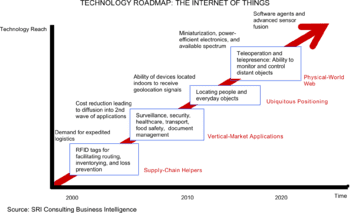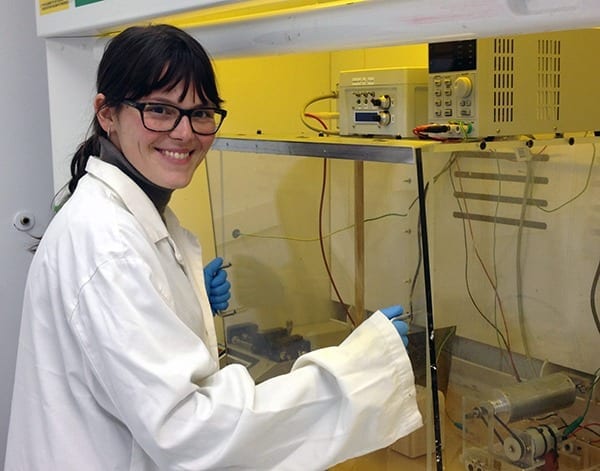
With an ever increasing number of everyday objects from our homes, workplaces and even from our wardrobes, getting connected to the Internet, known as the ‘Internet of Things’ (IoT), researchers from the University of Southampton have identified easy-to-use techniques to configure IoT objects, to make them more secure and hence help protect them from online attacks.
This increased connectivity brings additional risk. Setting personalised and strong passwords when connecting new devices to the Internet, for example through our home Wi-Fi networks, can mitigate such risks. However, many IoT devices have limited interfaces: just a few buttons (if any at all) and light indicators, making it challenging for users to configure them. If secure configuration becomes complicated, users may choose easier, less secure options that leave their devices vulnerable.
Southampton researchers compared four interaction techniques for the configuration of IoT devices, looking for methods that allowed security, but were quick and easy to use. All four techniques used the smartphone touchscreen to let users enter secure passwords.
Two of the techniques used a more ‘traditional’ approach by connecting the smartphone and the IoT device through a USB or audio cable, via the smartphone’s headphone socket. The third technique used a ‘Wi-Fi-only approach, where the smartphone creates a special temporary Wi-Fi network, or ‘ad-hoc network’, to which the IoT device automatically connects before being redirected to the correct permanent network. The final option was the smartphone and the IoT device exchanging information through light: the smartphone’s screen flashed black and white to mean binary ‘zero’ or ‘one’; the IoT device read this light/binary pattern to learn the password from the smartphone.
The results, which are presented at the ACM Ubicomp 2015 conference in Japan this week, found that two of the techniques were noticeably more usable than the others – the audio cable and the Wi-Fi-only interactions.
Read more: Making the ‘Internet of Things’ configuration more secure and easy-to-use
The Latest on: Internet of Things
[google_news title=”” keyword=”Internet of Things” num_posts=”10″ blurb_length=”0″ show_thumb=”left”]
via Google News
The Latest on: Internet of Things
- Crypto? AI? Internet co-creator Robert Kahn already did it… decades agoon May 6, 2024 at 4:59 pm
You told it what you wanted to do and launched it — you know, make airplane reservations, check your email, look at the news, let you know about things that might affect you, just freed you up; it ...
- 3 Internet of Things (IoT) Stocks with the Potential to Make You an Overnight Millionaireon May 4, 2024 at 3:18 am
InvestorPlace - Stock Market News, Stock Advice & Trading Tips By now, you’ve heard of the Internet of Things (IoT) — or the ...
- Internet of Thingson April 28, 2024 at 5:00 pm
Microchip has announced its most secure 32bit microcontrollers – a series of 120MHz Cortex-M33 MCUs for connected things. “Emerging requirements make security mandatory for the majority of IoT ...
- Shares of Internet of Things Play Impinj Soar on Strong Earnings and Outlookon April 26, 2024 at 12:17 am
Impinj stock skyrocketed Thursday after the chip provider offered robust guidance and better-than-expected earnings. The company manufactures radio-frequency identification, or RFID, chips for ...
- Internet of Things (IoT) Market to Expand at a Stellar 19.4% CAGR through 2031 | SkyQuest Technologyon April 25, 2024 at 3:45 am
Market will attain a value of USD 1572.37 billion by 2031, with a CAGR of 19.4% over the forecast period (2024-2031). Internet of Things (IoT) refers to the network of connected devices over the ...
- GigNet and IotaComm to Collaborate on Internet-of-Things (IoT) Solutions for the Mexican Caribbeanon April 22, 2024 at 2:20 pm
GigNet, a Digital Infrastructure company with an extensive regional fiber optic broadband network from Costa Mujeres, North of Cancun, through the Hot ...
- What You Should Know About The Internet Of Everythingon April 8, 2024 at 11:41 am
Do it now! As Scott J. Shackelford of the University of Indiana argues in his book The Internet of Things: What everyone needs to know: “We are just at the beginning of governing AI with ...
- internet of thingson April 2, 2024 at 4:59 pm
In today’s “predictable things that happened before and definitely will happen again”, we have another company in the “smart device” business that has just shuttered their servers ...
- Internet of Things (IoT)on March 15, 2024 at 2:04 am
UDRI works with industry and government clients to clarify needs and to design, develop, and integrate Internet of Things (IoT) solutions. Our researchers have developed and implemented IoT systems ...
- The Internet of Things: How It's Changing Carson December 20, 2023 at 4:50 am
As with most items and products that are re-engineered with the Internet of Things (IoT), they become even more powerful and useful in our daily lives. With the Internet of Things becoming an integral ...
via Bing News










